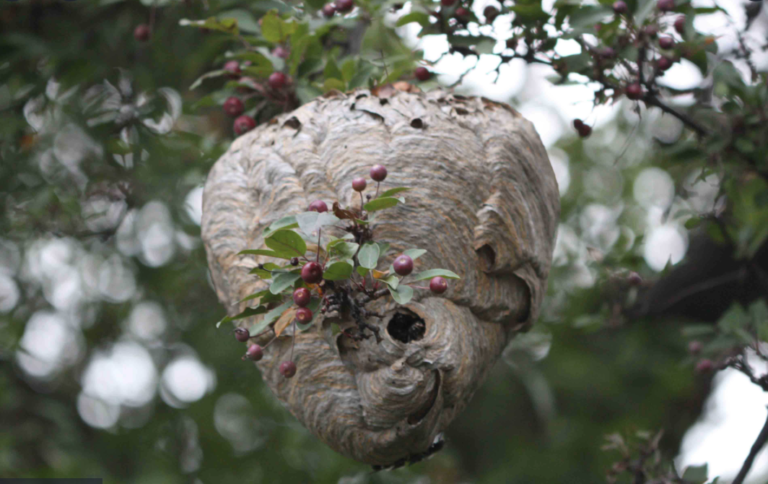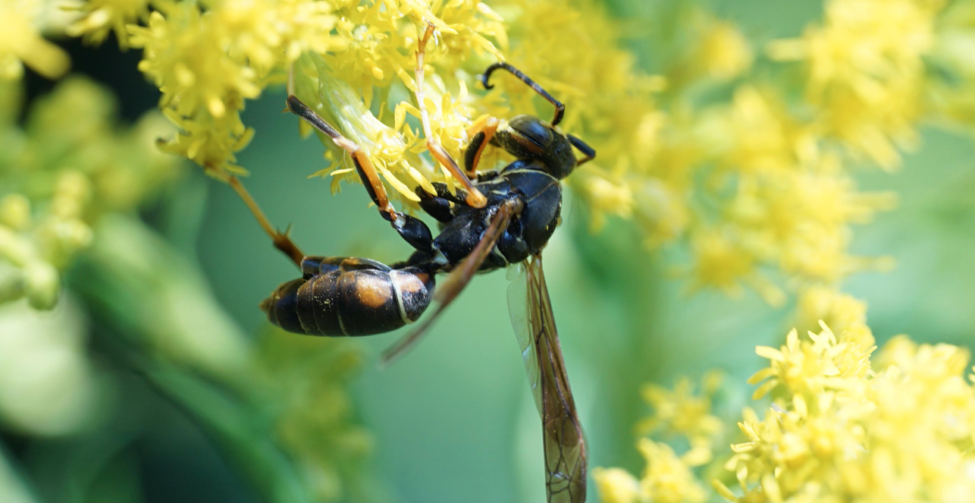
Getting Rid of Wasp Nests
Killing off a wasp nest is tricky business. As many of us know, wasps can be quick to sting people who approach their nest. This article will help you decide if you need to remove a wasp nest and provide you with options if it must be removed.
Many species of wasps provide beneficial ecosystem services such as feeding on garden pests. Wasp nests that don’t pose an immediate hazard can be left alone. Wasps vacate their nest in the fall and don’t reuse the same nest the next year. After a couple of hard frosts, the wasps should no longer pose an issue. Leaving wasp nests alone may reduce insecticides in the environment and support beneficial insects.
Professional pest removal companies can remove wasp nests that pose a threat to humans, pets or livestock. Anyone who attempts to use insecticides for wasp nest removals should follow the pesticide’s label and take precautions to avoid stings or other injuries.
Many species of wasps, bees and even flies can look alike to the untrained eye. Begin by confirming that you are dealing with social wasps by reviewing insects that look like bees from Michigan State University Extension (MSU Extension).
Seasonal life cycle of wasps
The wasps that may become a nuisance in late summer and fall belong to the family Vespidae. Though many species of vespids lead a solitary lifestyle and rarely cause us problems, yellow jackets, bald-faced hornets and paper wasps are social insects that live in large colonies. They construct their nests in the ground, in trees, under eaves and inside wall voids and attics. Nest construction starts in late spring and continues throughout the summer. The last brood raised includes males and next year’s queens. Due to the importance of these reproductives, the worker wasps become very protective and defensive toward those who venture too close to the nest this time of year.
In northern latitudes, social vespid nests are abandoned in the fall. After the new queens leave, all the workers eventually die due to starvation and cold weather. After mating, the queens seek protected sites in which to spend the winter; they are the only ones that survive the winter. The following spring, the queens emerge and search for a suitable nesting site and begin constructing new nests. Old nests are never reused, but a favorable nesting site may be selected year after year.
During August, the colony reaches its maximum size of worker wasps. The maximum size depends on the species; paper wasps may only produce a few dozen workers, while colonies of yellow jackets may reach one or 2,000 wasps.
Removing small, exposed nests of paper wasps
An important consideration when contemplating whether to eliminate a wasp nest is its location. Nests located in out-of-the-way sites that are not likely to be disturbed can be ignored since they are going to die out later in the year. Small, exposed paper wasp nests can be controlled by aerosol wasp sprays that produce a concentrated stream of insecticide that has a range of 15 to 20 feet or with a hose on the jet setting. Paper wasps do not cover their nests in a papier-mâché envelope like those of yellow jackets and bald-faced hornets, so their brood cells and workers are exposed and vulnerable
Excerpts from: Getting rid of wasp nests. Ana Heck and Nate Walton, Michigan State University Extension – Updated from an original article written by Howard Russell



